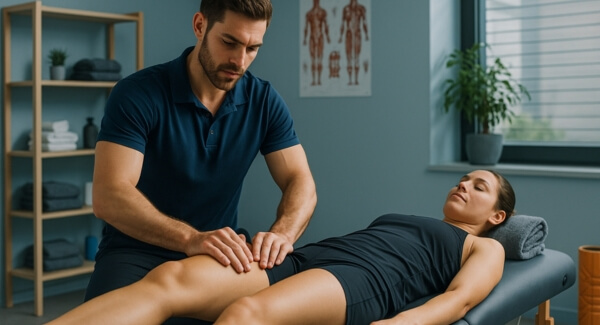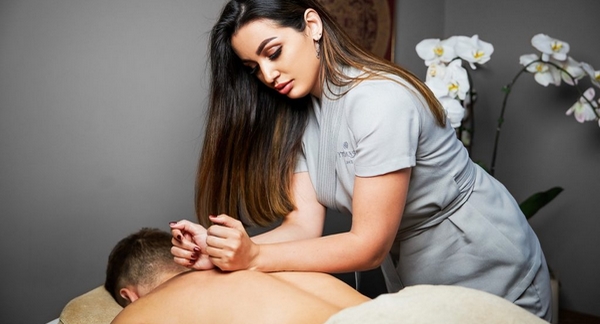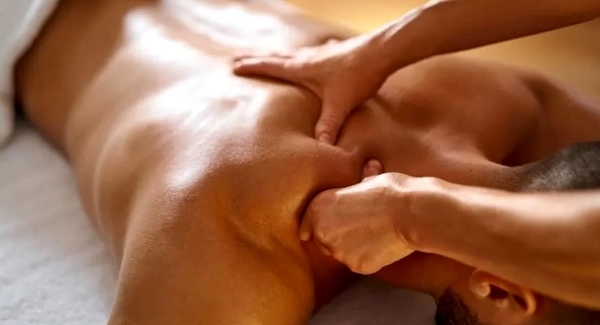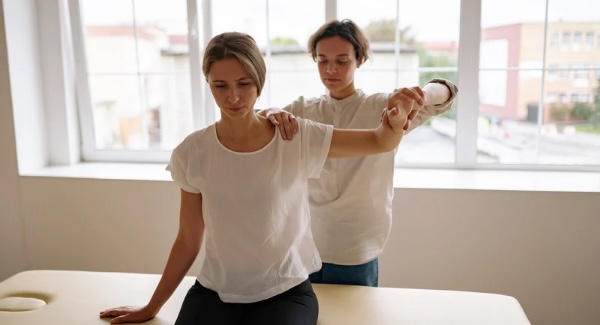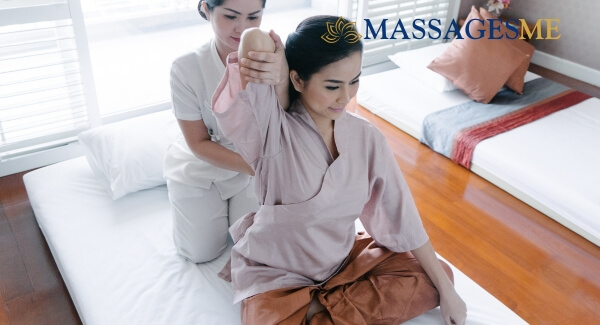Sports massage UK services have become essential components of athletic performance and recovery programmes throughout Britain, offering specialised therapeutic interventions that go far beyond traditional relaxation massage. These targeted treatments are specifically designed to support athletes, fitness enthusiasts, and active individuals in achieving peak performance while preventing injuries and accelerating recovery from intense physical training and competition.
The growing emphasis on men's wellness and comprehensive fitness optimisation has driven unprecedented demand for sports recovery massage across the UK, with professional sports clubs, fitness centres, and wellness facilities investing heavily in qualified sports massage therapists. This specialised form of athletic massage therapy combines advanced techniques with a deep understanding of sports physiology to deliver measurable improvements in performance, flexibility, and recovery outcomes.
UK Sports Massage Market and Performance Insights
- Professional Sports Integration: Over 85% of UK Premier League football clubs employ dedicated sports massage therapists as part of their medical teams
- Injury Prevention Impact: Regular sports massage reduces injury rates by 30-40% among recreational athletes and gym-goers
- Recovery Enhancement: Post-exercise sports massage decreases muscle soreness by up to 50% and improves flexibility by 15-20%
- Session Pricing: UK sports massage treatments range from £45-£85, with team and package rates offering 15-25% discounts
- Qualification Standards: Minimum Level 3 Sports Massage certification required, with BTEC and university-level qualifications preferred
- Performance Metrics: Athletes receiving regular sports massage show 20-25% improvement in power output and endurance markers
- Market Growth: 40% increase in sports massage demand over the past five years, driven by fitness culture and wellness awareness
Understanding Sports Massage: Beyond Traditional Therapy
What Is Sports Recovery Massage?
Sports recovery massage represents a highly specialised form of therapeutic bodywork specifically designed to address the unique demands placed on the body through athletic activity, intense training, and competitive sports. Unlike general relaxation massage, sports massage employs targeted techniques and deeper pressure to address muscle imbalances, reduce tension, and optimise physical performance.
Core Principles of Sports Massage Therapy:
- Performance-Focused Approach: Techniques specifically designed to enhance athletic capacity and competitive performance
- Injury Prevention Strategy: Identifying and addressing muscular imbalances before they develop into injuries
- Recovery Acceleration: Speeding the removal of metabolic waste products and promoting faster muscle repair
- Biomechanical Assessment: Understanding movement patterns and addressing dysfunction through targeted intervention
- Sport-Specific Applications: Tailoring techniques to the specific demands of different sports and activities
Sports Massage vs. Traditional Massage:
- Intensity and Pressure: Sports massage typically involves deeper, more targeted pressure to address specific muscular issues
- Assessment-Based Treatment: Comprehensive evaluation of movement patterns, muscle balance, and performance limitations
- Goal-Oriented Sessions: Clear objectives related to performance enhancement, injury prevention, or recovery acceleration
- Athletic Knowledge Required: Therapists must understand sports physiology, training adaptations, and performance demands
- Timing Considerations: Strategic scheduling around training cycles, competitions, and recovery periods
Advanced Sports Massage Techniques and Applications
Deep Tissue Sports Massage Methodology
Professional sports massage incorporates multiple specialised techniques that work synergistically to address the complex muscular and fascial restrictions commonly experienced by active individuals and competitive athletes.
Primary Sports Massage Techniques:
- Deep Tissue Massage: Sustained pressure targeting deeper muscle layers to release chronic tension and break down adhesions
- Trigger Point Therapy: Precise pressure application to hyperirritable muscle knots that refer pain to distant areas
- Myofascial Release: Gentle sustained pressure addressing fascial restrictions and improving tissue mobility
- Cross-Friction Massage: Perpendicular pressure across muscle fibres to promote healing and prevent scar tissue formation
- Muscle Energy Techniques: Client-assisted stretching and contraction methods to improve flexibility and joint mobility
Specialised Application Methods:
- Pre-Event Sports Massage: Stimulating techniques designed to warm muscles and enhance performance readiness
- Post-Event Recovery: Gentle techniques focusing on circulation enhancement and metabolic waste removal
- Maintenance Sessions: Regular treatments maintaining optimal muscle condition and preventing dysfunction
- Rehabilitation Support: Therapeutic techniques supporting injury recovery and return-to-sport protocols
- Performance Enhancement: Advanced techniques targeting specific performance limitations and biomechanical restrictions
Advanced Muscle Recovery Techniques
Modern sports massage therapy incorporates cutting-edge techniques and evidence-based approaches that maximise therapeutic outcomes while minimising treatment time and discomfort.
Innovative Recovery Methods:
- Neuromuscular Therapy: Addressing nerve entrapment and muscle imbalances through precise pressure and positioning
- Active Release Techniques (ART): Movement-based therapy combining precise touch with specific patient movements
- Graston Technique: Instrument-assisted soft tissue mobilisation using specialised tools for scar tissue breakdown
- Cupping Therapy Integration: Traditional cupping methods enhancing circulation and fascial release
- Dry Needling Support: Working alongside physiotherapy dry needling for comprehensive trigger point management
Technology-Enhanced Approaches:
- Percussion Therapy: High-frequency vibration tools targeting deep muscle layers and enhancing manual techniques
- Compression Therapy: Pneumatic compression devices supporting lymphatic drainage and recovery
- Heat and Cold Integration: Strategic temperature therapy enhancing massage effectiveness
- Electrotherapy Support: TENS and muscle stimulation devices complementing manual therapy
- Movement Analysis: Video analysis and assessment tools informing treatment planning and outcomes
Performance Benefits: Injury Prevention and Recovery Enhancement
Comprehensive Injury Prevention Strategy
Sports massage serves as a cornerstone of proactive injury prevention, addressing muscular imbalances, movement restrictions, and tissue quality issues before they develop into performance-limiting injuries.
Primary Injury Prevention Benefits:
- Muscle Imbalance Correction: Identifying and addressing strength and flexibility imbalances that predispose to injury
- Fascial Restriction Release: Improving tissue mobility and reducing compensation patterns that lead to overuse injuries
- Circulation Enhancement: Promoting optimal blood flow and nutrient delivery to working muscles
- Stress Point Identification: Early detection of developing problem areas before symptoms become apparent
- Movement Quality Improvement: Enhancing biomechanical efficiency and reducing injury-causing movement patterns
Recovery Acceleration Mechanisms:
- Metabolic Waste Removal: Enhanced circulation promoting faster elimination of exercise byproducts
- Inflammation Reduction: Techniques that modulate inflammatory responses and promote healing
- Muscle Soreness Relief: Significant reduction in delayed onset muscle soreness (DOMS) following intense exercise
- Tissue Repair Enhancement: Improved nutrient delivery and cellular regeneration supporting faster healing
- Nervous System Regulation: Parasympathetic activation promoting rest, recovery, and adaptation
Performance Enhancement and Athletic Optimisation
Regular sports massage therapy provides measurable improvements in athletic performance through enhanced flexibility, power output, endurance capacity, and biomechanical efficiency.
Physical Performance Benefits:
- Flexibility and Range of Motion: Significant improvements in joint mobility and muscle extensibility
- Power Output Enhancement: Increased force production capacity through optimised muscle function
- Endurance Improvement: Enhanced oxygen delivery and metabolic efficiency supporting longer performance
- Speed Development: Improved muscle firing patterns and reduced movement restrictions
- Coordination Enhancement: Better proprioception and neuromuscular control supporting skill execution
Mental and Psychological Benefits:
- Stress Reduction: Significant decreases in cortisol levels and stress-related tension
- Mental Focus Enhancement: Improved concentration and cognitive function supporting competitive performance
- Confidence Building: Physical wellness contributing to mental confidence and competitive readiness
- Sleep Quality Improvement: Enhanced recovery through better sleep patterns and deeper rest
- Anxiety Management: Reduced pre-competition anxiety and improved emotional regulation
Optimal Frequency: How Often Athletes Should Book Sports Massage
Professional and Elite Athlete Scheduling
Professional athletes and those training at elite levels require frequent, strategically timed sports massage sessions to maintain optimal performance and prevent injuries throughout demanding training and competition schedules.
Elite Athlete Frequency Recommendations:
- Professional Athletes: 2-3 sessions weekly during training periods, daily during competition phases
- Semi-Professional Competitors: Weekly maintenance sessions with additional pre/post-competition treatments
- University-Level Athletes: Bi-weekly regular sessions with event-specific scheduling
- Serious Amateur Competitors: Weekly sessions during peak training, bi-weekly during maintenance phases
- Youth Elite Athletes: Modified frequency considering growth, development, and training loads
Competition and Training Cycle Considerations:
- Pre-Season Preparation: Increased frequency addressing fitness development and injury prevention
- In-Season Maintenance: Regular sessions maintaining performance while managing accumulated fatigue
- Competition Periods: Strategic pre-event preparation and post-event recovery treatments
- Off-Season Recovery: Reduced frequency focusing on regeneration and movement quality
- Injury Management: Intensive scheduling supporting rehabilitation and return-to-sport protocols
Recreational and Fitness Enthusiast Guidelines
Recreational athletes and fitness enthusiasts can achieve significant benefits from strategically scheduled sports massage sessions tailored to their training intensity and wellness goals.
Recreational Athlete Frequency Options:
- Serious Fitness Enthusiasts: Bi-weekly sessions supporting intensive training programmes
- Regular Gym-Goers: Monthly maintenance sessions with additional treatments during intensive periods
- Weekend Warriors: Bi-weekly or monthly sessions managing high-intensity weekend activities
- Recreational Sports Players: Seasonal scheduling around sports participation and training
- Active Lifestyle Maintenance: Monthly sessions supporting overall movement quality and injury prevention
Activity-Specific Scheduling Strategies:
- Endurance Athletes: Post-long training sessions and pre-competition preparation
- Strength Training Focus: Sessions targeting areas of high training stress and muscle development
- Multi-Sport Participants: Scheduling around varying demands of different activities
- Injury History Considerations: Increased frequency for individuals with previous injury patterns
- Age-Related Adaptations: Modified scheduling considering recovery capacity and training response
Integration with Recovery Therapies and Performance Enhancement
Comprehensive Recovery Protocol Development
Modern sports performance optimisation requires integrating sports massage with complementary recovery modalities to create comprehensive protocols that address multiple aspects of athletic adaptation and recovery.
Primary Recovery Modality Combinations:
- Cryotherapy Integration: Post-massage cold therapy reducing inflammation and extending therapeutic benefits
- Infrared Sauna Synergy: Pre-massage heat therapy enhancing tissue preparation and post-massage relaxation
- Compression Therapy Support: Pneumatic compression enhancing lymphatic drainage and circulation
- Hydrotherapy Protocols: Contrast baths and pool recovery sessions supporting massage outcomes
- Physiotherapy Coordination: Working alongside physiotherapists for comprehensive injury management
Advanced Recovery Technology Integration:
- NormaTec Compression: Pneumatic compression devices enhancing post-massage recovery
- Game Ready Systems: Combined compression and cold therapy supporting targeted recovery
- Percussion Therapy: Theragun and similar devices complementing manual massage techniques
- TENS and Electrotherapy: Electrical stimulation supporting pain management and recovery
- Biomarker Monitoring: HRV and other metrics informing treatment timing and intensity
Contrast Therapy and Temperature Integration
A Strategic combination of sports massage with hot and cold therapies creates powerful recovery protocols that maximise circulation enhancement, inflammation control, and overall therapeutic outcomes.
Effective Contrast Therapy Protocols:
- Pre-Massage Heat Application: Infrared sauna or hot bath preparation enhancing tissue receptivity
- Post-Massage Cryotherapy: Strategic cold application maintaining massage benefits while controlling inflammation
- Alternating Temperature Cycles: Hot-cold alternation throughout treatment sessions enhancing vascular response
- Localised Temperature Therapy: Targeted hot or cold application to specific problem areas
- Recovery Bath Protocols: Epsom salt baths and contrast showers supporting massage outcomes
Performance Enhancement Integration:
- Mobility and Stretching: Dynamic and static stretching programmes complementing massage therapy
- Strength and Conditioning: Corrective exercise programmes addressing issues identified during massage
- Sports Psychology Support: Mental training and visualisation techniques enhancing physical therapy outcomes
- Nutrition Optimisation: Dietary strategies supporting recovery and performance goals
- Sleep Quality Enhancement: Sleep hygiene and recovery protocols maximising adaptation
Finding Professional Sports Massage Therapists in the UK
Professional Qualifications and Standards
Accessing high-quality sports massage requires understanding professional qualifications, certification standards, and the regulatory framework governing sports therapy practice throughout the United Kingdom.
Essential Professional Qualifications:
- Level 3 Sports Massage Certification: Minimum qualification for professional sports massage practice
- BTEC or University Qualifications: Advanced education in sports therapy, sports science, or related fields
- Professional Body Membership: Registration with the Sports Massage Association (SMA) or similar organisations
- Continuing Professional Development: Ongoing education and skill development requirements
- Professional Insurance: Comprehensive professional indemnity and public liability coverage
Advanced Specialisation Areas:
- Sport-Specific Expertise: Specialisation in particular sports or athletic populations
- Injury Rehabilitation: Advanced training in injury management and return-to-sport protocols
- Performance Enhancement: Specialisation in elite athlete support and performance optimisation
- Biomechanical Assessment: Advanced skills in movement analysis and dysfunction identification
- Integrated Therapy Approaches: Training in combining multiple recovery modalities
Accessing Professional Services Across the UK
The UK offers diverse options for accessing qualified sports massage therapists, from specialised sports therapy clinics to integrated wellness centres and mobile services bringing professional treatments directly to athletes and fitness enthusiasts.
Major UK Sports Therapy Networks:
- London Sports Medicine: Specialised clinics serving professional and amateur athletes throughout Greater London
- Manchester and Liverpool: Premier League and championship club affiliated therapists offering public services
- Edinburgh and Glasgow: University and professional sports-affiliated therapy centres
- Birmingham and Midlands: Regional sports science centres and private therapy clinics
- Nationwide Franchise Networks: Consistent quality standards across multiple UK locations
Finding the Right Therapist for Your Needs:
When seeking professional sports massage services, several excellent resources can help connect you with qualified practitioners. Established wellness centres and spa facilities throughout the UK increasingly offer sports massage as part of comprehensive athletic support programmes. For athletes and fitness enthusiasts requiring flexible scheduling and personalised attention, mobile sports massage services provide professional treatments at training facilities, homes, or competition venues.
Whether you're seeking experienced male sports massage therapists with expertise in strength sports and rugby, or prefer qualified female practitioners specialising in endurance sports and injury rehabilitation, these platforms provide access to certified professionals committed to athletic performance enhancement and injury prevention.
UK Sports Massage Investment and Value
Individual Session Pricing
- Standard Sports Massage: £45-£65 per 60-75 minute session, depending on location and practitioner experience
- London Premium Therapists: £60-£85 for experienced sports massage therapists in central London locations
- Regional UK Pricing: £40-£60 for qualified practitioners in smaller cities and towns
- Mobile Service Premium: Additional £10-£20 for mobile sports massage services
Package and Team Pricing Options
- Monthly Packages: £150-£250 for 4-session monthly packages with 15-20% savings
- Team and Club Rates: £35-£50 per session for sports teams and club members
- Elite Athlete Programmes: £200-£400 monthly for comprehensive support programmes
- Pre/Post-Event Packages: £80-£120 for combined preparation and recovery sessions
Specialist and Advanced Services
- Deep Tissue Sports Massage: £55-£75 for intensive therapeutic sessions
- Injury Rehabilitation Support: £60-£85 for specialised rehabilitation-focused treatments
- Performance Assessment: £75-£120 for comprehensive evaluation and treatment planning
- Integrated Recovery Programmes: £100-£180 for multi-modality recovery sessions
Value Considerations and ROI
- Injury Prevention Value: Regular sports massage typically costs less than single injury treatment
- Performance Enhancement: Measurable improvements in athletic capacity and competition outcomes
- Training Efficiency: Enhanced recovery allowing for higher training loads and better adaptations
- Long-term Health: Reduced wear-and-tear and extended athletic careers
Client Success Stories and Athletic Transformations
Sports Massage vs. Other Therapeutic Approaches
| Aspect | Sports Massage | Physiotherapy | Relaxation Massage |
|---|---|---|---|
| Primary Focus | Performance enhancement and athletic recovery | Injury rehabilitation and movement restoration | Stress relief and general relaxation |
| Treatment Approach | Targeted deep tissue work and sport-specific techniques | Exercise prescription and movement correction | Gentle, flowing strokes for overall relaxation |
| Intensity Level | Moderate to high intensity, sometimes uncomfortable | Variable based on rehabilitation needs | Light to moderate pressure for comfort |
| Session Goals | Injury prevention, performance optimisation, recovery | Functional restoration and pain reduction | Stress reduction and mental wellbeing |
| Frequency | Weekly to bi-weekly for active individuals | 2-3 times weekly during acute phases | Monthly or as desired for maintenance |
| Assessment | Movement patterns and performance limitations | Comprehensive functional and diagnostic assessment | General stress and tension identification |
Safety Considerations and Professional Guidelines
Treatment Precautions and Contraindications
Absolute Contraindications for Sports Massage:
- Acute Injuries: Fresh sprains, strains, or traumatic injuries requiring medical attention
- Infectious Conditions: Fever, contagious skin conditions, or systemic infections
- Severe Cardiovascular Issues: Uncontrolled hypertension, recent heart attack, or severe heart conditions
- Blood Clotting Disorders: Deep vein thrombosis, pulmonary embolism, or clotting medication concerns
- Cancer Treatment Areas: Active cancer treatment sites or areas receiving radiation therapy
Relative Contraindications Requiring Modification:
- Pregnancy: Modified techniques and positioning for expectant mothers continuing athletic activity
- Chronic Conditions: Diabetes, arthritis, or autoimmune conditions requiring adjusted pressure and techniques
- Medication Effects: Blood thinners, pain medications, or anti-inflammatory drugs affecting treatment response
- Recent Surgery: Healing surgical sites requiring modified treatment approaches
- Skin Conditions: Eczema, psoriasis, or sensitive skin requiring gentler techniques
Professional Safety Standards:
- Comprehensive Assessment: Thorough evaluation of training history, injury patterns, and current health status
- Informed Consent: Clear explanation of techniques, potential discomfort, and expected outcomes
- Communication Protocols: Ongoing feedback and adjustment throughout treatment sessions
- Emergency Procedures: Proper protocols for managing adverse reactions or complications
- Professional Boundaries: Appropriate therapeutic relationships and ethical treatment standards
Frequently Asked Questions
The Future of Sports Massage in UK Athletics
Sports massage therapy continues evolving within the UK's progressive athletic and fitness landscape, with growing integration of technology, evidence-based techniques, and comprehensive performance support systems that extend beyond traditional manual therapy approaches.
Emerging Trends and Technology Integration
- Biomarker-Guided Treatment: Using HRV, sleep data, and inflammation markers to optimise massage timing and intensity
- Movement Analysis Integration: 3D movement assessment informing targeted sports massage interventions
- Technology-Enhanced Techniques: Percussion devices, pneumatic compression, and thermal therapy integration
- Telehealth Support: Remote consultation and programme monitoring for athletes and fitness enthusiasts
- Artificial Intelligence: AI-driven treatment planning based on training loads, performance metrics, and recovery data
- Personalised Recovery: Genomic testing informing individualised massage and recovery protocols
Professional Development and Standards Evolution
- Advanced Education Requirements: Higher qualification standards and continuing education mandates
- Specialisation Pathways: Sport-specific certification programmes and advanced technique training
- Research Integration: Evidence-based practice protocols and outcome measurement standards
- Interdisciplinary Collaboration: Enhanced cooperation with physiotherapists, sports scientists, and medical professionals
- Quality Assurance: Standardised assessment tools and treatment efficacy measurements
- Technology Competency: Training in modern recovery technologies and assessment tools
Conclusion: Integrating Sports Massage into Your Performance Strategy
Sports massage UK services represent essential components of modern athletic performance and fitness optimisation, offering evidence-based therapeutic interventions that directly impact injury prevention, recovery acceleration, and performance enhancement. These specialised treatments go far beyond traditional relaxation massage, incorporating sophisticated techniques and sport-specific knowledge that address the unique demands placed on active bodies through training and competition.
The strategic integration of sports recovery massage with comprehensive training programmes creates powerful synergies that maximise athletic potential while minimising injury risk. By understanding optimal scheduling, technique applications, and combinations with other recovery modalities, athletes and fitness enthusiasts can develop personalised protocols that support their specific goals and performance requirements.
As sports massage therapy continues evolving through technology integration and enhanced professional standards, the UK leads in providing accessible, high-quality therapeutic services that support athletic excellence at all levels. Whether you're a professional athlete seeking competitive advantage, a weekend warrior managing training demands, or a fitness enthusiast focused on injury prevention, sports massage offers measurable benefits that justify investment in your long-term health and performance.
The key to maximising sports massage benefits lies in finding qualified practitioners who understand your specific sport, training demands, and performance goals. By establishing regular treatment schedules and integrating massage with comprehensive recovery strategies, you can unlock enhanced performance, faster recovery, and sustained athletic longevity, supporting your commitment to active living and competitive excellence.
Embracing sports massage as a fundamental component of your training and recovery programme represents an investment in both immediate performance gains and long-term athletic health. With proper professional guidance and consistent application, these therapeutic interventions can transform your approach to training, competition, and overall physical wellbeing.
